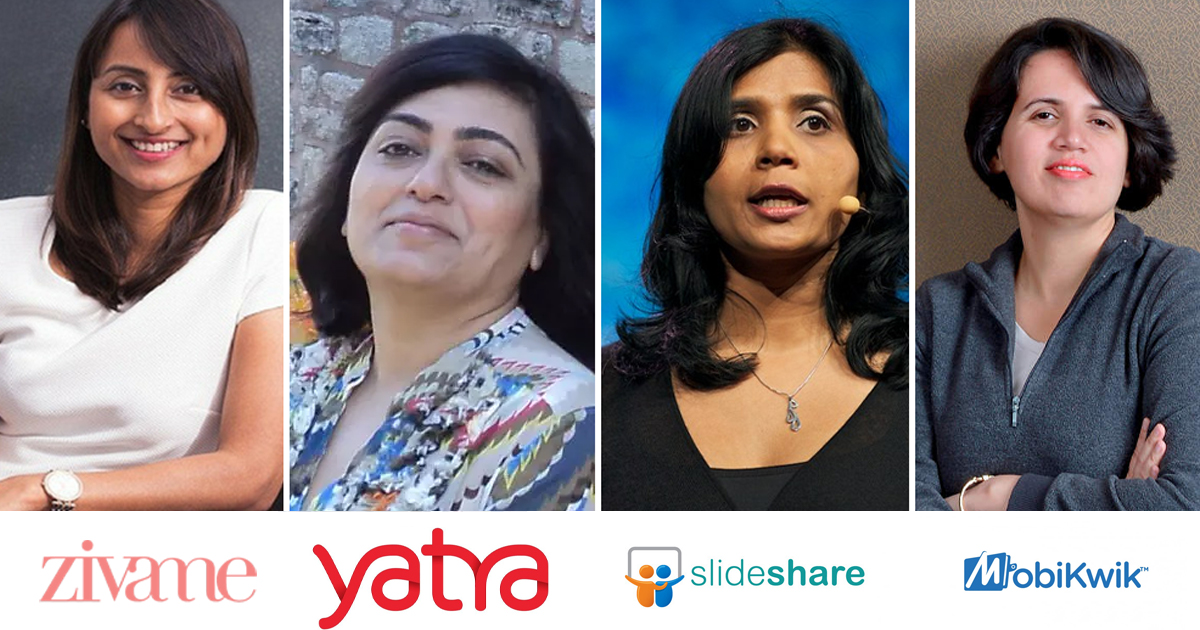Articles
9Gag – From A Meme Sharing Platform To A Money Making Machine

If you are on Facebook or Instagram, you are bound to come across 9Gag, a page which is a platform for sharing memes. 9Gag is one of the most popular pages on the internet owing to its diverse content and memes which are guaranteed to tickle your funny bone. As the internet technology advanced, digital marketing became the next big thing giving rise to the era of online advertising. Almost every site or platform runs ads these days in order to bring in an additional stream of revenue. This has helped sites with no business models to earn some revenue and 9Gag is no expectation to this fad. But 9Gag is not a small site anymore and the amount of daily users on its platform has made it into a money making machine. Read further to find out how 9Gag became what it is today.
Beginnings:
9Gag was founded in the year of 2008 by Ray Chan, his brother Chris Chan, Derek Chan, Marco Fung, and Brian Yu who were studying in Hong Kong. 9Gag was started as a platform which was an alternative to emails on which users could easily share humorous photos or content. The five founders pooled $1200 dollars to begin 9Gag as a side project to work on besides their day jobs. 9Gag was initially shared between the friends of the five founders but at the same time Facebook and Twitter were quickly gaining popularity. Content from 9Gag slowly began making its way to Facebook and Twitter as users who found funny content on 9Gag began sharing it on social media platforms.
Funding
By 2012, 9Gag was no longer a side project but a full fledged site which was attracting a steady stream of users. Ray Chan and the four founders quit their day jobs and decided to work on 9Gag full time. It was also in 2012 that 9Gag launched its application on the Android and iOS platforms. 2012 was also the year when 9Gag received its first venture capital funding from the silicon valley. The founders raised $ 2.8 million in funding from 22 investors.
ALSO READ: The Success Story Of Tupperware And How It Became A Household Name
Target audience
9Gag is currently a platform which caters to three segments of target audience which makes up for its entire user base. The first and major chunk of the target audience are the readers or browsers who come to the platform to look at content. The second important target audience are the content creators. Both readers and creators contributed to more than 3.5 billion page views per month in 2018 with a registered user base of 40 million. The third and the minority group of target audience comprises of the advertisers.
Revenue streams
Today 9Gag has multiple sources of revenue but the two major sources are via its 9Gag Pro subscription and ads. 9Gag Pro is currently priced at Rs. 250 while the Pro+ is priced at Rs. 1150. This price varies according to the geographical location of a user. As of 2018, 9Gag was making $ 1.76 million per month via ads and $ 0.12 million via its pro membership. However, today 9Gag has its own online marketplace where users can purchase 9Gag goodies which it sells in partnership with famous influencers. 9Gag also partners with cyber gaming studios to run ads on their platform as well as create exclusive content.
9Gag is a perfect example of how a platform to share memes can generate revenue, thereby proving that in this day and age, any need can be converted into a business model. In the case of 9Gag, it took the need of its user to look at funny content to pass time and made it into a successful cash cow.
Articles
5 Successful Indian Startups Founded By Women

The workplace has undergone massive changes in the last century. At the turn of the Industrial Revolution, any workplace was dominated by men while the women were delegated to run the homes. However, with the advent of the internet and new and exciting technologies, workplaces have undergone a tectonic shift. Women are no longer comfortable staying at home and are instead opting to lead teams and organisations. As every year passes, we get closer to true gender equality, women have proven time and again that they are equally capable to get the job done if not better in some instances. Names like Wolfe Herd (Bumble founder,) Kylie Jenner (Kylie Cosmetics founder,) Masaba Gupta (Masaba clothing label founder) are just some of the names who are known for leading world famous brands with their unique style of leadership.
As the world celebrates International Women’s Day, we bring to you five women founders who run world famous and successful startups.
1) Upasana Taku-MobiKwik
If you are an Indian and are used to doing online shopping, more often than not at the time of payment, you would be directed to a payment gateway. One of these gateways would normally be MobiKwik. The startup is a well known name in the digital payments and digital wallet space. MobiKwik was founded by Upasana Taku in 2009, who prior to founding MobiKwik used to work with PayPal. Today Upasana Taku is also in charge of bank partnerships, business operations, and talent acquisition at MobiKwik.
2) Richa Kar-Zivame
An enthusiastic MBA student, Richa Kar, developed an online lingerie shopping platform in the year 2011. Currently, Zivame is India’s leading online lingerie store with a valuation of more than $ 100 million. The brilliant idea for her own lingerie business came to light when Richa tracked Victoria’s Secret’s sales, who was one of her clients when she was working at SAP. She observed the lingerie sales figures reached peaks overseas but, Indian women were not provided with the similar innerwear. While Richa was studying the Indian lingerie market, she realized the social embarrassment in India surrounding lingerie shopping. Today Richa Kar could be credited with destigmatising the uneasiness surrounding lingerie shopping in India.
3) Falguna Nayar-Nykaa
After a long stint as an investment banker, Falguni Nayar founded Nykaa.com in the year 2013. An online one stop shop for beauty products from Indian and international brands, Nykaa changed the world of online shopping. Who would have ever thought buying makeup online would be so easy? Falguni Nayar proved many critics wrong and created a brand new place for people who love experimenting with styles, designs and colors.
ALSO READ: Zivame: Founding Story
4) Sabina Chopra-Yatra.com
Yatra.com is a popular Indian website for making flight and hotel bookings. Sabina Chopra was instrumental in identifying the potential for travel commerce in India and people moving towards cheaper or easier travel. By the time, people started looking to make bookings, Sabina made sure Yatra.com was already in place. Sabina was the former Head of India Operations of eBookers, which is also an online travel company based in Europe. Along with this, she was also working with Japan Airlines which further adds to her experience in the travel industry.
5) Rashmi Sinha-SlideShare
SlideShare allows people to upload and access their presentations online. While this feature is presently available everywhere, SlideShare was one of the first players in making this happen. Rashmi Sinha was one of the founders of the presentation sharing platform SlideShare. The company became so successful that in 2012, LinkedIn acquired the company for an amount of $100 million.
Let us know in the comments if you know any other wonderful women who have become leaders of their right or have started up and are doing extraordinary things. We at Startup Stories wish a wonderful Women’s Day to all the women in the world who are changemakers.
Articles
Why Are Ads On Digital Media Failing To Reach The Right Audience?

If you are a regular user of social media platforms and also a fan of consuming content on the digital medium, then there is a very high likelihood that you have seen ads on pages you are reading or watching something. There would be times when you have been targeted by an ad which feels like it was wrongly targeted at you. Imagine if you are a vegetarian by choice and while browsing online, if you are targeted by a food delivery app which shows ads about chicken dishes. The ad would only serve to spoil the mood of the online user instead of serving its actual purpose which is to push the user to buy a chicken dish.
These wrongly targeted ads might be the side effects of performance marketing or a weak brand marketing. Performance marketing means advertising programs where advertisers pay only when a specific action occurs. These actions can include a generated lead, a sale, a click, and more. Inshort, performance marketing is used to create highly targeted ads for a very specific target audience at a low cost. Performance marketing usually means high volume for a very specific cost.
Brand marketers on the other hand believe in narrowly defining target audiences but end up spending a lot of money on ad placements. Gautam Mehra, CEO, Dentsu Programmatic India & CDO, Dentsu International Asia Pacific said, “You’ve defined a persona, you know the emotions you want to elicit, but then you buy a YouTube masthead and CricInfo sponsorships because IPL is up. If brand advertisers look at audience-based buys more deeply than just placements, you will see more relevant ads (sic.)”
ALSO READ: How Digital Marketing Is Impacted Due To The COVID-19 Pandemic
Performance marketing is more of a sales function rather than a marketing function and is about meeting the cost of acquisition. This is a reason why budgets are usually high for performance marketing. Mehra goes on to add, “the fact is that an engineer can out-beat FMCGs on performance marketing. Advertisers who have cracked this are spending 10x and are on an ‘always on’ mode (unlike time-bound brand campaigns.)”
There is always the case of supply and demand, with the supply usually exceeding the demand on digital platforms. Ultimately, it boils down to the choice between no ad versus low relevance ad and it is quite easy to guess that having a low relevance ad is better.
Arvind R. P., Director – Marketing and Communications at McDonald’s India (West and South,) said “McDonalds’ for instance, has seen its share of spends on digital grow from 20% levels a couple of years back to over 40% at present. Outcomes of this journey have been encouraging, proven by our media-mix-modelling and other key metrics. We have seen best results from an optimal mix of Television plus digital (sic.)” Moreover, Arvind also believes performance marketing only approach could turn out to be more suited to short term, versus a more consistent full funnel effort. The latter ensures adequate emphasis on building consideration, as well as growing transactions. Arvind feels digital is a complex medium which needs investment in the right talent who could use the right tools. Brands which underestimate the need for the investment are often disappointed from the return on investment from the digital medium.
With the constantly changing consumer dynamics marketers are now shifting to unscripted marketing which frankly needs more insights into the consumer mindset. The lack of marketers to do the proper research is why digital medium is plagued with irrelevant ads.
Articles
From Unicorn To Bankruptcy; Knotel Bears The Brunt Of COVID-19 Pandemic

It is no secret that in the fast paced world of startups, fortunes can change at the snap of fingers. Sometimes startups tend to scale so quickly that they become unicorns and sometimes the fortunes reverse so quickly that a startup can immediately go bankrupt from being a unicorn. The latter was the case for an American property technology startup Knotel, who are now bankrupt due to the disruptions by the COVID-19 pandemic.
Knotel is a property technology company quite similar to WeWork. Knotel designed, built and ran custom headquarters for companies which It manages the spaces with ‘flexible’ terms. Knotel does a mix of direct leases and revenue sharing deals. Knotel marketed its offering as ‘headquarters as a service’ or a flexible office space which could be customized for each tenant while also growing or shrinking as needed. For the revenue-share agreements, Knotel solicits clients, builds out offices, and manages properties, and shares the rent paid to it by the client with the landlord. This model is the majority revenue generator for Knotel.
In March 2020, just before the COVID-19 pandemic unleashed its economic destruction on the world, Knotel was valued at $ 1.6 billion. What is even more interesting is Knotel raised $ 400 million in Series C funding in August 2019 which led to its unicorn status. However, with the COVId-19 pandemic and its consequent lockdowns and curfews by various governments across the world, startups and businesses shifted to a remote working model. This in turn led to startups pulling out of Knotel properties to cut down on working costs.
ALSO READ: Quibi : Startup With A Billion Dollar Launch To Shutting Down All In Six Months
In late March 2020, according to Forbes, Knotel laid off 30% of its workforce and furloughed another 20%, due to the impact of the coronavirus. It was at this point that Knotel was valued at $ 1.6 billion. The company had started the year with about 500 employees. By the third week of March,Knotel had a headcount of 400. With the cuts, about 200 employees remained with the other 200 having either lost their jobs or on unpaid leave, according to Forbes.
In 2021, Knotel filed for bankruptcy and agreed to sell its assets to Newmark, one of their investors for a total of $ 70 million dollars. As work culture is still undergoing changes as a consequence of the COVID-19 pandemic and with many companies realising that remote work model saves costs and improves work efficiency, the flexible workspace sector would continue to face challenges. Knotel is just the tip of the iceberg and is a warning call for the flexible working spaces industry.














code of destiny
March 12, 2025 at 11:14 pm
Hello! Do you know if they make any plugins to help with
SEO? I’m trying to get my website to rank for some targeted keywords but I’m not seeing very good gains.
If you know of any please share. Thank you! You can read similar article here:
Your destiny
나목TV송파출장섹스마사지
March 23, 2025 at 4:08 pm
https://microsoft-powerpoint-2010.softonic.kr/download
Quinn
March 27, 2025 at 2:20 am
I’m really inspired with your writing skills and also with the structure for your weblog. Is that this a paid subject matter or did you customize it your self? Anyway keep up the excellent high quality writing, it is uncommon to look a nice blog like this one today. I like startupstories.in ! It is my: Madgicx
영스타미디어비아그라판매
April 24, 2025 at 2:46 am
https://www.youtube.com/channel/UCyt2dGrKTf9KpBk1jdUl3oA
www.binance.com Inscreva-se
May 3, 2025 at 8:55 pm
Your point of view caught my eye and was very interesting. Thanks. I have a question for you.
5b1h8
June 5, 2025 at 12:26 pm
clomid buy clomiphene tablets can you buy generic clomiphene pills can i get clomiphene prices clomiphene chart can i buy cheap clomiphene without prescription can i order generic clomid for sale
Консультация может проходить в удобном для вас формате
June 23, 2025 at 12:13 pm
Консультация может проходить в удобном для вас формате Психоаналитик и психоаналитический психотерапевт 428
www.binance.com
September 16, 2025 at 12:16 am
Thanks for sharing. I read many of your blog posts, cool, your blog is very good.
iwin
November 5, 2025 at 11:55 am
iwin – nền tảng game bài đổi thưởng uy tín, nơi bạn có thể thử vận may và tận hưởng nhiều tựa game hấp
MM88
November 6, 2025 at 4:31 am
Khám phá thế giới giải trí trực tuyến đỉnh cao tại MM88, nơi mang đến những trải nghiệm cá cược thể thao và casino sống động.
Если по делу.
November 6, 2025 at 3:06 pm
Просто знать – этого недостаточно.
Надо применять. Желать – этого недостаточно.
Надо делать
Если по делу.
谷歌站群
November 7, 2025 at 12:22 pm
专业构建与管理谷歌站群网络,助力品牌实现全域流量的强势增长。谷歌站群
站群程序
November 9, 2025 at 1:14 pm
搭载智能站群程序,自动化搭建与管理,为SEO项目提供核心驱动力。站群程序
Kuwin
November 11, 2025 at 12:17 pm
kuwin sở hữu kho game đa dạng từ slot đến trò chơi bài đổi thưởng, mang đến cho bạn những giây phút giải trí tuyệt vời.
ios超级签
November 12, 2025 at 9:05 am
苹果签名,苹果超级签平台,ios超级签平台ios超级签苹果企业签,苹果超级签,稳定超级签名
MM88
November 16, 2025 at 11:01 pm
Với giao diện mượt mà và ưu đãi hấp dẫn, MM88 là lựa chọn lý tưởng cho các tín đồ giải trí trực tuyến.
J88
November 20, 2025 at 6:05 pm
Đến với J88, bạn sẽ được trải nghiệm dịch vụ cá cược chuyên nghiệp cùng hàng ngàn sự kiện khuyến mãi độc quyền.
В тему.
November 24, 2025 at 5:16 pm
Просто знать – этого недостаточно.
Надо применять. Желать – этого недостаточно.
Надо делать
В тему.
Если по делу.
November 24, 2025 at 6:16 pm
Просто знать – этого недостаточно.
Надо применять. Желать – этого
недостаточно. Надо делать
Если по делу.